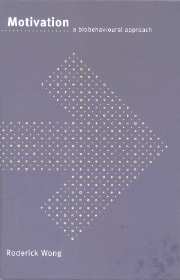Book contents
- Frontmatter
- Contents
- Preface and acknowledgements
- 1 Introduction and perspective
- 2 Mating and reproductive activities
- 3 Parental/maternal activities
- 4 Feeding activities
- 5 Food selection
- 6 Drinking activities
- 7 Stimulus seeking and exploratory activities
- 8 Aversive motivation systems: fear, frustration and aggression
- 9 Social motivation: attachment and altruism
- 10 Conclusions and retrospective
- References
- Author index
- Subject index
3 - Parental/maternal activities
Published online by Cambridge University Press: 10 December 2009
- Frontmatter
- Contents
- Preface and acknowledgements
- 1 Introduction and perspective
- 2 Mating and reproductive activities
- 3 Parental/maternal activities
- 4 Feeding activities
- 5 Food selection
- 6 Drinking activities
- 7 Stimulus seeking and exploratory activities
- 8 Aversive motivation systems: fear, frustration and aggression
- 9 Social motivation: attachment and altruism
- 10 Conclusions and retrospective
- References
- Author index
- Subject index
Summary
Offspring care or parental/maternal behaviour has received scant coverage in most books on motivation. This activity is manifested mainly by the mother, but in some species the father also engages in caregiving behaviour. Pryce (1992) defined maternal motivation as ‘a female's tendency to make infants the goal of her behaviour where that behaviour can be described as promoting infant well-being’. This topic, if considered in motivation books, is often subsumed in the chapter on sexual activities and sometimes in the discussion on social attachment. Why should parental behaviour deserve more interest and attention? This activity ensures the survival of offspring and thereby enhances the parents’ reproductive success. In most mammalian species active copulators who are unconcerned with the product or outcome of their mating activities may not leave many survivors to continue their genetic line. However, there is variation in the prevalence of parental behaviour among species. Wilson (1975, p. 168) declared that ‘the pattern of parental care is a biological trait like any other; it is genetically programmed and varies from one species to the next. Whether any care is given in the first place and what kind and for how long are details that can distinguish species as surely as diagnostic anatomical traits used by taxonomists’.
The extent of parental care varies and is partly related to the complexity of the organism. Many aquatic invertebrates simply shed their eggs and sperm into the water and leave the embryos, arising from the consequent union, to fend for themselves. In contrast, caring for one's offspring is widespread among birds and mammals.
- Type
- Chapter
- Information
- MotivationA Biobehavioural Approach, pp. 59 - 88Publisher: Cambridge University PressPrint publication year: 2000



